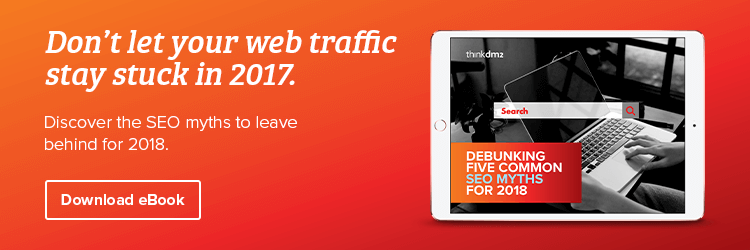
image credit: Rawpixel.com/shutterstock
In the b2b marketing landscape, a functional, intuitive website design is crucial when driving lead generation and measuring up to competitors. Websites need search engine optimization, a strong content management system, and accessible load times to work effectively. Digital marketers should follow these five guidelines for their b2b web development in 2018.
1. Measure key web analytics, including lead conversion rates
Keep track of your marketing and sales qualified leads. Low conversion rates mean you’re not targeting the right areas for marketing growth. Some metrics to follow include:
- Average session duration
- Webpage bounce rates
- Overall website traffic rates
- Channels visitors are coming from
Create landing pages for each of your marketing campaigns, and ensure they are consistent with your website’s overall design. A successful landing page will attract a reader’s attention, increasing the likelihood of lead conversion.
2. Optimize your b2b website for search engines
On-page SEO tags make it easier for visitors to locate your content, and ensure your content is more relevant to their searches. Keywords, such as digital marketing and content development, can be used in your page’s title, headers, and url. Long-tail keywords work best, because they are more personalized and specific. You can keep track of your keyword rankings with analytics tools like Google Analytics.
For off-page optimization, internal links lead to relevant web pages from third parties. External links bring traffic from other sources to your website, which can increase your brand awareness.
3. Develop an accessible content management system
Content management systems, such as WordPress, make it easy for readers to browse through your content. Blog posts can be organized by topics, such as b2b marketing or lead generation strategies, and link to other relevant posts. Common features for content management systems include file managing, HTML coding, and design options.
Content management adds structure to your website’s blog. Audience engagement rates will increase if your content is neatly organized and easy to locate by topic.
4. Don’t let your website’s speed lose the race for driving leads
Whether it’s desktop or mobile, web speed is a critical component when attracting visitors. Bounce rates will increase if your pages aren’t loading properly. To measure your website’s speed, you can use Google’s Pagespeed Insights tool.
Too many images and gifs can slowdown load times; use images only when they are relevant to understanding the content, instead of for the sake of quantity.
5. Use gated content to encourage prospects to connect with your brand
Around 80% of b2b content marketers use gated content to help generate leads. When using gated content, you want to be sure you are giving prospects the right value in exchange for their contact information. Gated content offers can include downloadable case studies, whitepaper, and ebooks.
If a prospect is still in the awareness stage of his or her buyer journey, they haven’t established trust toward your brand yet. Gated content works most effectively in the consideration and decision stages, since your brand recognition will be much stronger for prospects. During these stages, content such as downloadable software and webinars are great ways to further build trust for your brand.
Thinkdm2 has helped clients with their b2b website design and website development for over 25 years. We are dedicated to giving clients the strategies they need for digital marketing and branding success. To learn more web development guidelines for lead generation, download our eBook today.



